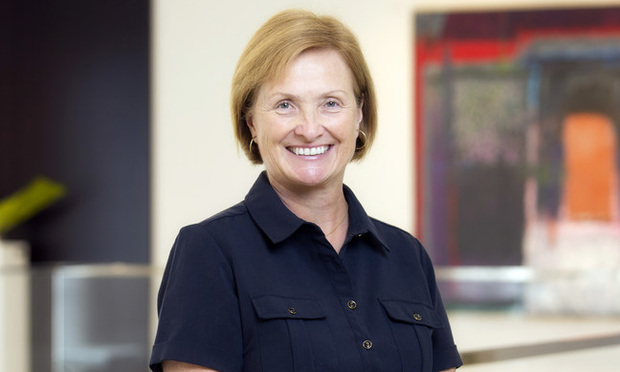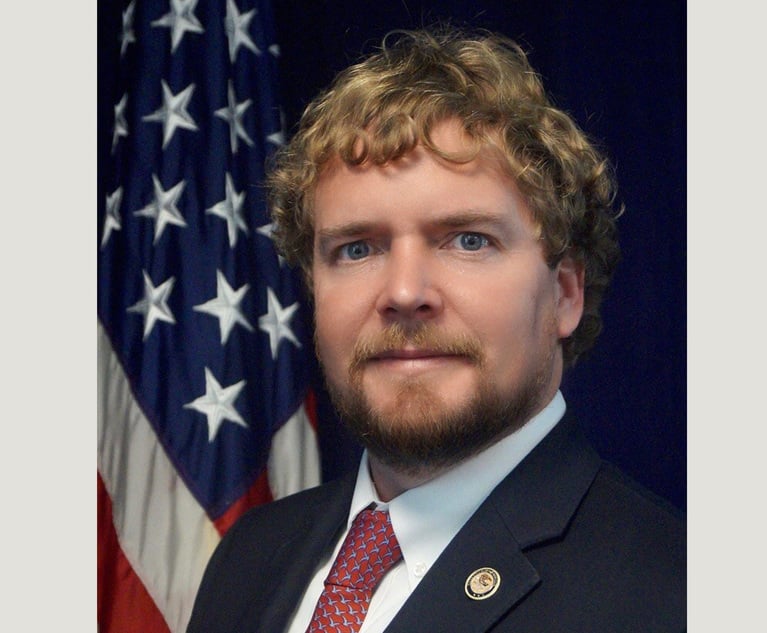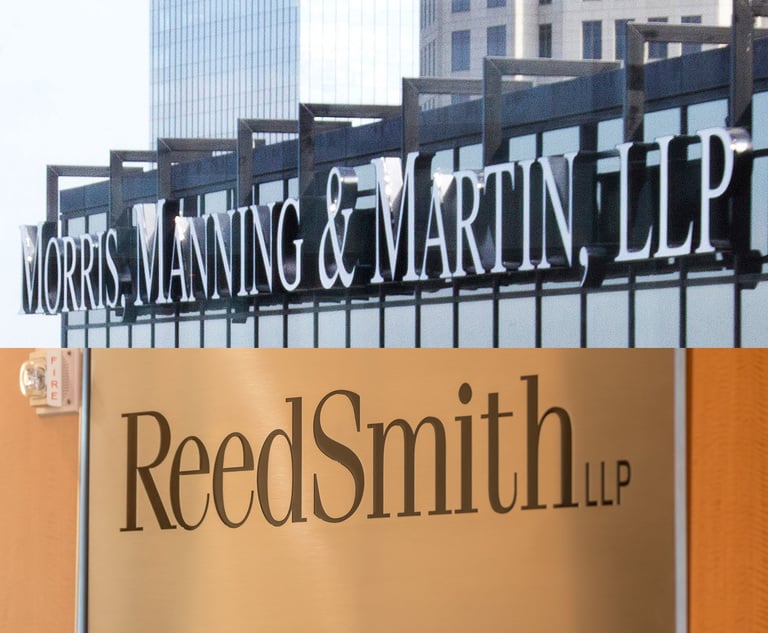Alston & Bird Partners With GSU Analytics Lab For Future Law
The unique collaboration will help Alston's lawyers and clients create legal analytics projects as they learn what's possible and where are the limitations.
March 22, 2019 at 04:13 PM
8 minute read
 Nola Vanhoy, senior director, Legal Technology Innovation, Alston & Bird, Atlanta. (Courtesy photo)
Nola Vanhoy, senior director, Legal Technology Innovation, Alston & Bird, Atlanta. (Courtesy photo)
Legal tech vendors are plying law firms with all sorts of data analytics software, and large firms have been incorporating big data into their operations, but there is still plenty of confusion by attorneys about how the emerging technologies work or what they do.
Alston & Bird is taking a different approach. It has formed a unique, broad-based partnership with Georgia State University's new Legal Analytics Lab to develop artificial intelligence programs for the firm from the ground up. The goal is to help the firm's lawyers and staff become more educated about existing software applications for legal data and to develop new applications that serve firm and client needs.
For example, said Nola Vanhoy, Alston's senior director for legal technology innovation, could there be ways for different practices to manage cases more efficiently or to produce better results?
“There is a lot of hype around all this—AI and tech,” Vanhoy said. “The reality is lawyers need to learn more about what's possible and what the limitations are.”
It's a crowded space. Stanford Law School's CodeX Center for Legal Informatics has curated a list of 1,140 legal tech companies.
The Alston partnership with GSU is unique in part because universities with legal analytics labs are still rare. Vanhoy said it's the only one she knows of where a large firm is partnering with a university on such a broad scale. “It's not patterned after any other program,” she said. “I think we'll see more.”
Like other large firms, Alston had already been investing in legal tech before the GSU partnership. “With this, we're not just buying a piece of software and seeing if people will do it. We're trying to embed a way of thinking into the firm,” Vanhoy said.
Vanhoy found out about GSU's legal analytics lab, which launched in fall 2017, from an article in the Daily Report. When one of Alston's clients wanted help predicting the cost of litigation and settlements, she said, she invited the lab's director, Charlotte Alexander, to the firm to talk with her and some other lawyers about what the legal analytics lab could do.
“What we learned is we have more to learn,” Vanhoy said. “Companies who can figure out how to integrate legal analytics across the board—and figure out what makes sense and what's not worth the effort—are going to succeed.”
That's precisely what Alston is doing, Alexander said. “Instead of just falling for the glitz, Alston wants to build its own competencies and look at the promise and shortcomings of different tools,” she said. “They will bring in vendors and people as needed.”
Partnership Benefits
Vanhoy declined to say how much Alston is spending on the GSU partnership, but it's a “big investment in resources—money, people and time,” she said. “The firm is willing to make it because it's the future.”
Part of what clients pay outside counsel for is their intellectual capital, which in earlier days meant lawyers' expertise and the firm's library. But now corporate legal departments have easy access to online databases of legal codes and case law.
What law firms can offer clients now, Vanhoy said, is expertise in these new technology tools to determine patterns and predict outcomes for client matters.
Vanhoy said that after she and Alexander made a presentation on the Alston-GSU partnership at a firm CLE, a client who'd attended suggested a project to them. “To have a general counsel follow you out of the room, give you their card and ask how they can do this, that's the kind of interaction we want,” she said.
How It Works
Alston and GSU are kicking off their collaboration with orientation workshops on legal analytics and machine learning open to all the firm's lawyers and staff. That will be followed by a hands-on skills-training project for those interested, and then specific engagements between Alston and the GSU lab called “sprints,” that are based on ideas from lawyers, clients and staff.
While this is the lab's first engagement by a firm for a soup-to-nuts legal analytics collaboration, it has been working on a sprint for Barrett & Farahany, a plaintiffs employment firm that aims to predict how often federal judges grant summary judgment to employers in employment cases.
In another, Starr Insurance Cos. has engaged the lab to improve its underwriting process for directors and officers insurance by spotting indicators that make public companies likely to be sued for securities fraud. Among other things, the lab is analyzing the texts of plaintiffs securities suits.
Text is a very important source of data for lawyers, whether legal memoranda, statutes, regulations or contracts, said Anne Tucker, the director of GSU Law's legal analytics initiative, who coordinates activities between the law school and the lab.
 Georgia State University professors Charlotte Alexander (left) and Anne Tucker (Photo: John Disney/ALM)
Georgia State University professors Charlotte Alexander (left) and Anne Tucker (Photo: John Disney/ALM)She conducted the first Alston workshop for lawyers and staff late February—an introduction to legal analytics. The initial phase, text-mining, requires converting words from texts into numerical representations, Tucker said. Then computer scientists code algorithms to answer questions about the texts, based on certain key words such as how many times a motion to dismiss is filed in employment discrimination cases in a jurisdiction and what the outcome might be.
“How do you take unstructured data and turn it into structured data so you can perform a quantitative analysis?” Tucker said. “That's the opportunity for us.”
Vanhoy said more than 110 people at Alston attended the workshop, even though it was a 90-minute chunk out of their day. Alston, which has more than 800 lawyers, also distributed a video to personnel firmwide.
Afterward, Vanhoy said, she was thrilled to hear from two people that they already have projects in mind.
“The hope is that if our folks learn more about analytics terminology, methods and modeling, it will create ideas for more and more projects,” she said.
One project, she added, may use the GSU lab to develop databases and algorithms and then compare the results to those from a third-party software tool. “That will help us know what is the right tool for the right project,” Vanhoy said.
The next Alston workshop will be an introduction to machine learning taught by Sanjay Srivastava, who heads GSU's Institute for Insight. Housed in the business school, the institute supports the legal analytics lab and several other applied computer science labs.
Machine learning, Tucker said, is about training computer algorithms to more accurately find patterns in the text-data by refining the examples inputted. Common applications are e-discovery and due diligence for deal contracts.
Predictive Applications
“If you can write code that turns text into data, you can apply to any kind of texts—contracts, leases, time-keeping records and judges' opinions,” Alexander said.
Predicting litigation duration and outcomes is one of the most hotly sought-after applications, by assessing court dockets and judges' decisions. Using a firm's internal data to assess pricing and billing is also popular.
While there is “enormous promise” in the predictive applications, Alexander said it's difficult to create an off-the-shelf tool that works in all cases because there is so much variation across different court systems. Assembling a comprehensive set of documents in a database that is rich enough for an accurate forecast is also difficult and time-consuming, she explained.
But there's a lot of potential with a firm as large as Alston, Alexander said, because it has its own databases of pleadings, billing and hours records.
While not common, some other universities have legal analytics labs.
At Northwestern University, which has one called the Innovation Lab, law and computer science faculty and students are working on specific legal analytics projects for Mayer Brown, Reed Smith, Actuate Law in Chicago and the university's legal clinic, said Dan Linna, a law professor who heads its computer science and law initiative (CS+L).
In one project for Mayer Brown, for example, the Innovation Lab is using AI to flag any potentially problematic financial transactions, such as wiring funds to other countries, and making sure they comply with existing laws.
But Linna said he had not heard of a broad-based partnership from the ground up between a university and firm, like the one between GSU and Alston.
Stanford's CodeX legal analytics lab is working on a variety of AI projects, such as assessing legal issues for various types of blockchain and assembling a national database of police traffic stops, but not for law firms.
Alston envisions a long-term partnership with GSU's legal analytics lab, Vanhoy said. “We don't know what ideas will come from this but we think we are putting the groundwork in place for years down the road.”
This content has been archived. It is available through our partners, LexisNexis® and Bloomberg Law.
To view this content, please continue to their sites.
Not a Lexis Subscriber?
Subscribe Now
Not a Bloomberg Law Subscriber?
Subscribe Now
NOT FOR REPRINT
© 2025 ALM Global, LLC, All Rights Reserved. Request academic re-use from www.copyright.com. All other uses, submit a request to [email protected]. For more information visit Asset & Logo Licensing.
You Might Like
View All

Sunbelt Law Firms Experienced More Moderate Growth Last Year, Alongside Some Job Cuts and Less Merger Interest
4 minute read
12-Partner Team 'Surprises' Atlanta Firm’s Leaders With Exit to Launch New Reed Smith Office
4 minute readTrending Stories
- 1Pro Hac Vice in Georgia: Rule Change for Nonresident Attorneys
- 2The Benefits of E-Filing for Affordable, Effortless and Equal Access to Justice
- 3AI and Social Media Fakes: Are You Protecting Your Brand?
- 4A Primer on Using Third-Party Depositions To Prove Your Case at Trial
- 5‘Catholic Charities v. Wisconsin Labor and Industry Review Commission’: Another Consequence of 'Hobby Lobby'?
Who Got The Work
J. Brugh Lower of Gibbons has entered an appearance for industrial equipment supplier Devco Corporation in a pending trademark infringement lawsuit. The suit, accusing the defendant of selling knock-off Graco products, was filed Dec. 18 in New Jersey District Court by Rivkin Radler on behalf of Graco Inc. and Graco Minnesota. The case, assigned to U.S. District Judge Zahid N. Quraishi, is 3:24-cv-11294, Graco Inc. et al v. Devco Corporation.
Who Got The Work
Rebecca Maller-Stein and Kent A. Yalowitz of Arnold & Porter Kaye Scholer have entered their appearances for Hanaco Venture Capital and its executives, Lior Prosor and David Frankel, in a pending securities lawsuit. The action, filed on Dec. 24 in New York Southern District Court by Zell, Aron & Co. on behalf of Goldeneye Advisors, accuses the defendants of negligently and fraudulently managing the plaintiff's $1 million investment. The case, assigned to U.S. District Judge Vernon S. Broderick, is 1:24-cv-09918, Goldeneye Advisors, LLC v. Hanaco Venture Capital, Ltd. et al.
Who Got The Work
Attorneys from A&O Shearman has stepped in as defense counsel for Toronto-Dominion Bank and other defendants in a pending securities class action. The suit, filed Dec. 11 in New York Southern District Court by Bleichmar Fonti & Auld, accuses the defendants of concealing the bank's 'pervasive' deficiencies in regards to its compliance with the Bank Secrecy Act and the quality of its anti-money laundering controls. The case, assigned to U.S. District Judge Arun Subramanian, is 1:24-cv-09445, Gonzalez v. The Toronto-Dominion Bank et al.
Who Got The Work
Crown Castle International, a Pennsylvania company providing shared communications infrastructure, has turned to Luke D. Wolf of Gordon Rees Scully Mansukhani to fend off a pending breach-of-contract lawsuit. The court action, filed Nov. 25 in Michigan Eastern District Court by Hooper Hathaway PC on behalf of The Town Residences LLC, accuses Crown Castle of failing to transfer approximately $30,000 in utility payments from T-Mobile in breach of a roof-top lease and assignment agreement. The case, assigned to U.S. District Judge Susan K. Declercq, is 2:24-cv-13131, The Town Residences LLC v. T-Mobile US, Inc. et al.
Who Got The Work
Wilfred P. Coronato and Daniel M. Schwartz of McCarter & English have stepped in as defense counsel to Electrolux Home Products Inc. in a pending product liability lawsuit. The court action, filed Nov. 26 in New York Eastern District Court by Poulos Lopiccolo PC and Nagel Rice LLP on behalf of David Stern, alleges that the defendant's refrigerators’ drawers and shelving repeatedly break and fall apart within months after purchase. The case, assigned to U.S. District Judge Joan M. Azrack, is 2:24-cv-08204, Stern v. Electrolux Home Products, Inc.
Featured Firms
Law Offices of Gary Martin Hays & Associates, P.C.
(470) 294-1674
Law Offices of Mark E. Salomone
(857) 444-6468
Smith & Hassler
(713) 739-1250







